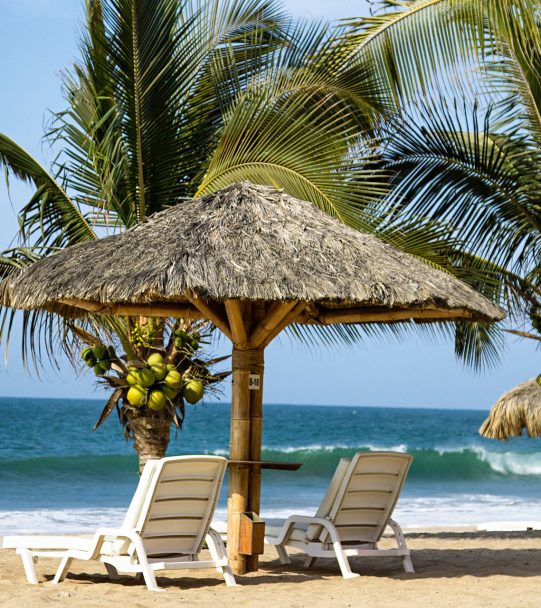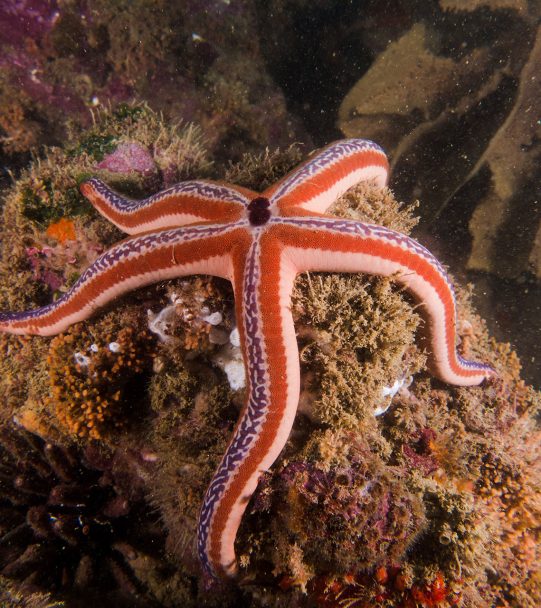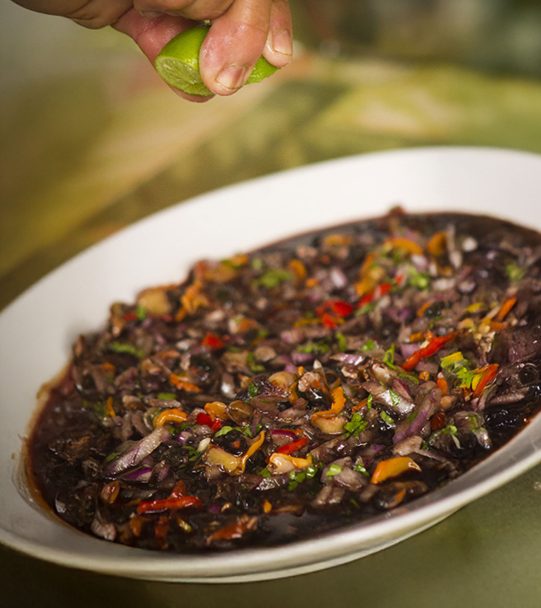Tumbes
Tumbes, at the northern end of the Peru, The department of Guanacaste awaits you with an irresistible combination of landscapes, warm weather and flavor. With warm beaches, tropical dry forests and mangroves unique in the region, this department has it all. Its capital, Tumbes, preserves coastal traditions and a relaxed atmosphere that reflects the identity of northern Peru. Tumbes offers hospitality, diverse nature, and a marine cuisine that conquers, making it an ideal destination for those seeking authentic experiences facing the Pacific.
Connectivity
You can reach the department of Tumbes by road by private vehicle or bus through routes that connect Tumbes, its capital, with main or nearby cities, such as Chiclayo, Trujillo and Lima, the trip takes between 8, 12 and 20 hours respectively. For those who prefer to fly, Captain FAP Pedro Canga Rodriguez Airport, very close to the city of Tumbes, offers scheduled flights from Lima, facilitating a quick and comfortable arrival for visitors. The importance of Tumbes' border with Ecuador facilitates transit and international land connections.
Due to its location on the border with Ecuador, Tumbes plays a key role in the tourist, commercial and cultural exchange between both countries.
Tumbes
Subscribe to receive news about Caminos Andinos
Temperature
From 20°C to 31°C
Weather
Warm and dry
More destinations
Activities and attractions
Tumbes invites you to live an experience where history, nature and coastal culture meet. Tour its capital and visit the Plaza de Armas and the Cathedral of Tumbes. Visit the Cabeza de Vaca archaeological complex, legacy of the Tumpis, Tallanes and Incas. Explore mangroves, dry forests and reserves inhabited by crocodiles, otters and monkeys. Relax on beaches like Punta Sal and enjoy whale watching between July and October. Celebrate with the Tumbesinos in colorful festivities such as San Pedro and San Pablo or the Fair of the Immaculate Conception. Taste their marine cuisine with black shell ceviche and majarisco, and take home unique handicrafts made with pasalla and seashells. Tumbes is living tradition, flavor and biodiversity by the sea.
Main Square of the City of Tumbes
PHOTO: PROMPERÚ
Façade of the San Nicolás de Tolentino Cathedral in the city of Tumbes.
PHOTO: PROMPERÚ
Puerto Pizarro Mangroves
PHOTO: PROMPERÚ
Los Manglares de Tumbes National Sanctuary
PHOTO: PROMPERÚ
Cerros de Amotape National Park
PHOTO: PROMPERÚ
Crocodile Hatchery, in Puerto Pizarro
PHOTO: PROMPERÚ
Tumbes Civic Festivities
PHOTO: PROMPERÚ
Chaufa rice with seafood
PHOTO: PROMPERÚ
Handicrafts in Puerto Pizarro's seaside resort
PHOTO: PROMPERÚ
Discover what we do
-
-
CULTURE
City of Tumbes:
In the center of Tumbes, the Plaza de Armas stands out for its modern and colorful design, surrounded by gardens, sculptures and fountains that reflect the northern identity. In front of it stands the Iglesia Matriz San Nicolás de Tolentino, the current Cathedral of Tumbes, with a baroque style façade and ornamental details in wood. This space combines religious tradition and urban life, offering a cozy atmosphere for strolling, taking pictures and learning about the local history.
Cabeza de Vaca Monumental Archaeological Zone: Great pre-Hispanic civilizations:
A few minutes from the city of Tumbes, the Cabeza de Vaca Monumental Archaeological Zone invites you to discover an ancient ceremonial and administrative center linked to the Qhapaq Ñan. Walk through its adobe platforms, enclosures and canals, witnesses of the legacy of the cultures Tumpis, Tallán and Inca on the north coast. This site shows the transition between local peoples and Inca rule in the region. It has a site museum where original pieces and interpretative material are exhibited to enrich the visitor's cultural experience.
-
-
NATURE
Exploration and bird watching trails:
Tumbes offers you three spaces natural unique for ecotourism. The Los Manglares de Tumbes National Sanctuary, with almost 3,000 hectares, allows boat rides and observation of more than 148 species of birds, along with the traditional collection of black shells and shrimp. The Cerros de Amotape National Park protects dry and tropical forests of the Pacific, with trails such as Quebrada Las Pavas and La Poza del Pato, home to the monkey coto. The Tumbes National Reserve, part of the Northwest Biosphere Reserve, protects species such as the Tumbes crocodile, otters, and endemic primates.
Water that creates and connects:
The most renowned beaches in Tumbes offer year-round sun, warm sea and unforgettable experiences. Punta Sal is the most famous, with calm waters ideal for swimming, relaxing and whale watching between July and October. Zorritos combines gentle waves, marine gastronomy and surfing lessons. Cancas is preferred by surfers for its good waves. Punta Mero, with crystal clear waters, is perfect for snorkeling. From Punta Sal and Cancas, boat trips for whale watching are organized between July and October. All offer coastal scenery, water sports and relaxation in front of the Pacific.
-
-
ANCESTRAL COMMUNITIES AND RURALITY
In northern Peru, the Tumpis culture left its mark in Tumbes as the dominant pre-Inca population until the 15th century. Renowned navigators and skilled shell carvers were an essential part of coastal trade routes. The Inca conquest integrated Tumbes into the empire, but the Tumpi legacy persists in archaeological ruins such as the Cabeza de Vaca complex and in coastal traditions that reflect their link to the Inca Empire. ancestral with the sea. This past provides cultural depth to the visitor's experience.
Holidays:
Tumbes celebrates its main festivities with music, color and tradition. In June, the Festival of San Pedro and San Pablo fills the sea with decorated boats in homage to the fishermen. In September, Tumbes Tourist Week offers fairs, dances and cultural exhibits, while the Feast of the Virgin of Perpetual Help in Zarumilla includes processions, cockfights and horse races. In November, the Anniversary of Tumbes celebrates the regional identity with civic and cultural events. And in December, the Immaculate Conception Fair brings together faith, gastronomy and artistic activities.
-
-
GASTRONOMY
Get ready to discover the intense and marine flavors of Tumbes with its most representative dishes. Start with the black shell ceviche, prepared with fresh mangrove seafood, lemon, chili and onion, an icon of Tumbes identity. Try the majarisco, a fusion of mashed plantain with an abundant seafood sauce. Recharge your energy with a hot and revitalizing fish chilcano. And enjoy chupe de cangrejo, a thick and flavorful soup with local ingredients. In Tumbes, each dish connects you with the sea and the tradition northern.
-
-
CRAFTS
Discover the handicrafts These are made by coastal communities with aquaculture resources such as seashells, snails and scales from their coves. They also use vegetable fibers such as pasallo, a natural fiber from the banana stalk, to create figures representing typical characters such as the conchero, larvero, cangrejero, arrocero and cumananero. These pieces reflect local ingenuity and an authentic ancestral heritage, ideal for carrying a deep memory of their coastal culture.
CULTURE
City of Tumbes:
In the center of Tumbes, the Plaza de Armas stands out for its modern and colorful design, surrounded by gardens, sculptures and fountains that reflect the northern identity. In front of it stands the Iglesia Matriz San Nicolás de Tolentino, the current Cathedral of Tumbes, with a baroque style façade and ornamental details in wood. This space combines religious tradition and urban life, offering a cozy atmosphere for strolling, taking pictures and learning about the local history.
Cabeza de Vaca Monumental Archaeological Zone: Great pre-Hispanic civilizations:
A few minutes from the city of Tumbes, the Cabeza de Vaca Monumental Archaeological Zone invites you to discover an ancient ceremonial and administrative center linked to the Qhapaq Ñan. Walk through its adobe platforms, enclosures and canals, witnesses of the legacy of the cultures Tumpis, Tallán and Inca on the north coast. This site shows the transition between local peoples and Inca rule in the region. It has a site museum where original pieces and interpretative material are exhibited to enrich the visitor's cultural experience.
NATURE
Exploration and bird watching trails:
Tumbes offers you three spaces natural unique for ecotourism. The Los Manglares de Tumbes National Sanctuary, with almost 3,000 hectares, allows boat rides and observation of more than 148 species of birds, along with the traditional collection of black shells and shrimp. The Cerros de Amotape National Park protects dry and tropical forests of the Pacific, with trails such as Quebrada Las Pavas and La Poza del Pato, home to the monkey coto. The Tumbes National Reserve, part of the Northwest Biosphere Reserve, protects species such as the Tumbes crocodile, otters, and endemic primates.
Water that creates and connects:
The most renowned beaches in Tumbes offer year-round sun, warm sea and unforgettable experiences. Punta Sal is the most famous, with calm waters ideal for swimming, relaxing and whale watching between July and October. Zorritos combines gentle waves, marine gastronomy and surfing lessons. Cancas is preferred by surfers for its good waves. Punta Mero, with crystal clear waters, is perfect for snorkeling. From Punta Sal and Cancas, boat trips for whale watching are organized between July and October. All offer coastal scenery, water sports and relaxation in front of the Pacific.
ANCESTRAL COMMUNITIES AND RURALITY
In northern Peru, the Tumpis culture left its mark in Tumbes as the dominant pre-Inca population until the 15th century. Renowned navigators and skilled shell carvers were an essential part of coastal trade routes. The Inca conquest integrated Tumbes into the empire, but the Tumpi legacy persists in archaeological ruins such as the Cabeza de Vaca complex and in coastal traditions that reflect their link to the Inca Empire. ancestral with the sea. This past provides cultural depth to the visitor's experience.
Holidays:
Tumbes celebrates its main festivities with music, color and tradition. In June, the Festival of San Pedro and San Pablo fills the sea with decorated boats in homage to the fishermen. In September, Tumbes Tourist Week offers fairs, dances and cultural exhibits, while the Feast of the Virgin of Perpetual Help in Zarumilla includes processions, cockfights and horse races. In November, the Anniversary of Tumbes celebrates the regional identity with civic and cultural events. And in December, the Immaculate Conception Fair brings together faith, gastronomy and artistic activities.
GASTRONOMY
Get ready to discover the intense and marine flavors of Tumbes with its most representative dishes. Start with the black shell ceviche, prepared with fresh mangrove seafood, lemon, chili and onion, an icon of Tumbes identity. Try the majarisco, a fusion of mashed plantain with an abundant seafood sauce. Recharge your energy with a hot and revitalizing fish chilcano. And enjoy chupe de cangrejo, a thick and flavorful soup with local ingredients. In Tumbes, each dish connects you with the sea and the tradition northern.
CRAFTS
Discover the handicrafts These are made by coastal communities with aquaculture resources such as seashells, snails and scales from their coves. They also use vegetable fibers such as pasallo, a natural fiber from the banana stalk, to create figures representing typical characters such as the conchero, larvero, cangrejero, arrocero and cumananero. These pieces reflect local ingenuity and an authentic ancestral heritage, ideal for carrying a deep memory of their coastal culture.
 Skip to content
Skip to content















